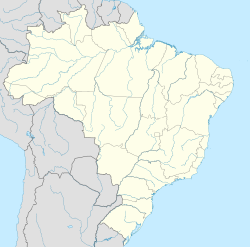
The Federal University of Rio Grande do Sul is a Brazilian public federal research university based in Porto Alegre, Rio Grande do Sul. UFRGS is among the largest and highest-rated universities in Brazil, having one of the largest number of scientific publications. From 2012 to 2019, the university was elected as the best federal university of Brazil. UFRGS has over 31,000 undergraduate students, over 12,000 graduate students, and more than 2,600 faculty members. As a Brazilian public federal institution, students do not pay tuition fees to enroll in courses offered by the university.

Chapecó is a municipality in the state of Santa Catarina, in the Southern Region of Brazil. Being a major industrial, financial and educational center, it is a major producer of industrialized food products. Considered a medium city, with a population estimated at 224,013 inhabitants, it is among the four most important cities in the state. It belongs to the Meso-region of Western Santa Catarina and to the Microregion of Chapecó.
Talian, or Brazilian Venetian, or Vêneto is a Venetian dialect spoken primarily in the Serra Gaúcha region in the northeast of the state of Rio Grande do Sul in Brazil. It is also spoken in other parts of Rio Grande do Sul, as well as in parts of Espírito Santo and of Santa Catarina.

Novo Hamburgo is a municipality in the southernmost Brazilian state of Rio Grande do Sul, located in the metropolitan area of Porto Alegre, the state capital. As of 2020, its population was 247,032. The city covers an area of 217 km2 (84 sq mi), and the average temperature is 19 °C (66 °F), which is mild for the region. The Sinos River runs through the urban area.

Cascavel is a city in the state of Paraná in Brazil. It is the fifth most populous city in the state with 348,051 inhabitants, according to IBGE 2022 Census. The distance to Curitiba, the state capital, is 491 kilometers by freeway.

Santo Ângelo is a municipality located in northwestern Rio Grande do Sul state, Brazil. It has about 77,568 inhabitants and the total area of the municipality is about 679 km2. It borders Giruá to the north, and Entre-Ijuís to the south—it's linked to Santo Ângelo by the state road RS 344. The city is located 443 km (275 mi) from the state capital, Porto Alegre.
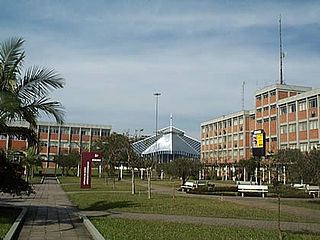
The Lutheran University of Brazil is a university which covers several states throughout Brazil.

Polish Brazilians refers to Brazilians of full or partial Polish ancestry who are aware of such ancestry and remain connected, to some degree, to Polish culture, or Polish-born people permanently residing in Brazil. Also, a Polish Brazilian may have one Polish parent.

Frederico Westphalen is a southern Brazilian town located in the state of Rio Grande do Sul.

Pinhal Grande is a municipality of the central part of the state of Rio Grande do Sul, Brazil.
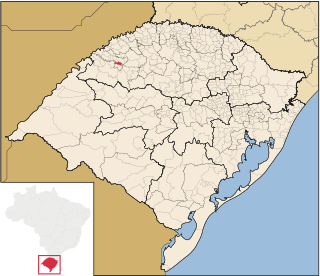
Mato Queimado is a Brazilian municipality located in the northwestern part of the state of the Rio Grande do Sul. The population is about 1,629 in an area of 114.64 km². It is located 489 km in the west of the state capital of Porto Alegre and northeast of Alegrete.

São Francisco de Assis is a Brazilian municipality in the western part of the state of Rio Grande do Sul. It has a population of 18,205 (2020). Its elevation is 151 m. It has an area of 2,530.9 km². It is located 434 km west of the state capital of Porto Alegre. The nickname of the city is Sao Chico.

Capão do Leão is a Brazilian municipality in the southern part of the state of Rio Grande do Sul. The population is 25,409 in an area of 785.37 km2. The city hosts the main campus of Universidade Federal de Pelotas, the largest higher education institution in the southern portion of Rio Grande do Sul.
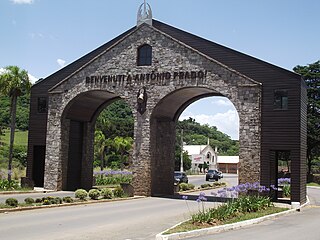
Antônio Prado is a municipality located in the Serra Gaúcha regionin The city is in the state of Rio Grande do Sul, Brazil. It boasts the largest collection of architectural heritage designated by IPHAN related to Italian colonization in Brazil. Its population is estimated at 13,045 people.

Ivorá is a Brazilian municipality in the state of Rio Grande do Sul. According to the 2022 census by the Brazilian Institute of Geography and Statistics (IBGE), the municipality has a population of 1.929 inhabitants.
Nova Bassano is a municipality and a city in the state of Rio Grande do Sul, south Brazil.
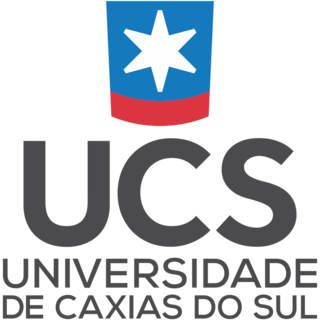
The University of Caxias do Sul is a higher education institution in the northeast region of Rio Grande do Sul, Brazil. It has units in the cities of Caxias do Sul, Bento Gonçalves, Vacaria, Canela, Farroupilha, Guaporé, Nova Prata and São Sebastião do Caí, offering more than 150 admission options in nine different areas of knowledge. In 2017 and 2018 it was listed by the university ranking of Folha de S. Paulo as the sixth best private university in the country.
The Jaguarizinho River is a river of Rio Grande do Sul state in southern Brazil. It is a tributary of the Jaguari River.

The Universidade Feevale (Feevale) is a Brazilian university in the city of Novo Hamburgo in the metropolitan region of Porto Alegre, Rio Grande do Sul. The selection process is through an entrance exam and continuous assessment.
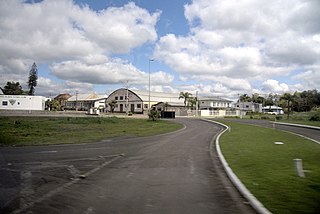
Nova Milano is a historic site and the seat of the fourth district of the Brazilian municipality of Farroupilha, considered the birthplace of Italian colonization in the state of Rio Grande do Sul. Originally the headquarters of the Caxias Colony, a pavilion was set up there in 1875 to welcome the immigrants who were waiting to be placed in the colonies in the region. In 1876 the colonial headquarters was transferred to Campo dos Bugres, but Nova Milano, on the margins of a very busy road, became a village, and in 1902 became the headquarters of the third district of Caxias. The arrival of railroads in 1910 determined a reorganization in the road and economic structure of the region, harming the growth of Nova Milano, which in 1934 was incorporated to the new municipality of Farroupilha as its fourth district, remaining until today with mainly rural characteristics.



